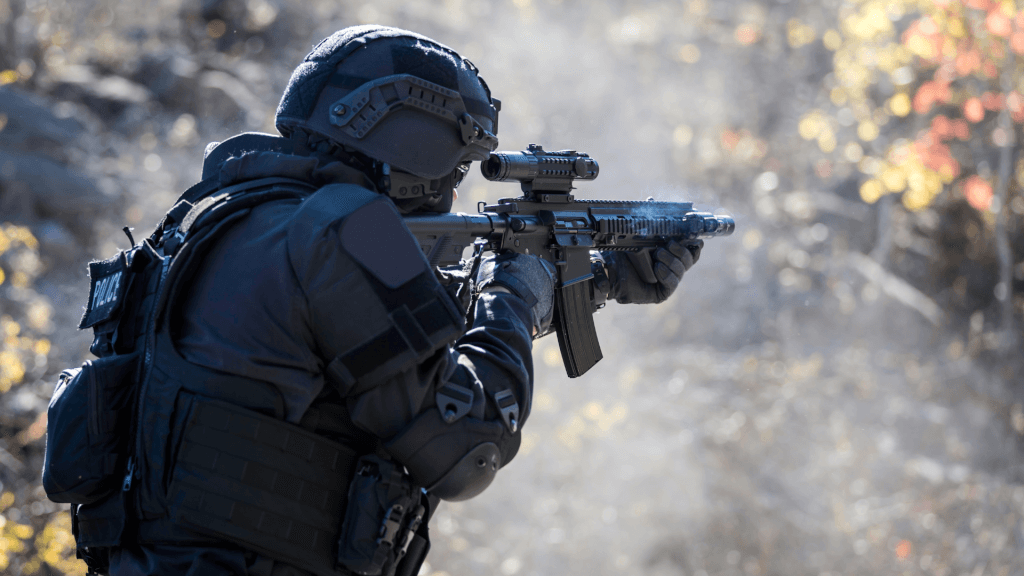
When Can NSW Police Use Lethal Weapons & Shoot-To-Kill?
NSW police officers’ primary task is to protect the community. Unfortunately, sometimes that means they need to use lethal weapons in order to save an innocent bystander, or in self-defence. However, shoot-to-kill is a serious matter and comes with strict criteria for NSW police.
NSW Police power to shoot-to-kill
In Australia, most deaths in police custody are due to gunshot wounds. Additionally, fatal police shootings are on the rise. Therefore, it is paramount that we all understand when NSW police can use lethal weapons and shoot-to-kill.
NSW Police defence equipment
Some of the defence equipment that NSW police use include:
- Batons,
- Capsicum spray,
- A gun,
- Taser.
An officer should always consider using all other options (baton, taser) before reaching for their gun.
What is reasonable force for NSW police?
Defining what is ‘reasonably necessary’ is complicated. Police officer must only use a firearm as a last resort. Officers should only use guns in self-defence. Additionally, the act of shooting with intent to kill must be a reasonable response to the threat in question.
Therefore, police should only use firearms in the following situations:
- There is an imminent threat of death to the officers or civilian/s,
- Or there is an imminent threat of serious injury to the officer or civilian/s,
Basically, police can use reasonably necessary force to arrest someone, prevent a suspect from escaping, or other lawful functions. However, many factors go into deciding what force is reasonable. For example, the officer will consider the following:
- The suspect’s age, gender, size, or fitness,
- If the suspect is resisting arrest,
- The suspect is believed to be highly skilled with firearms or combat.
If using a firearm is necessary, an officer should always try aim for a non-lethal wound. However, in training, instructors train NSW police officers to aim at a torso. This is to prevent missing the target and hitting an innocent civilian. However, such torso shots mean there is an unofficial shoot-to-kill policy as an outcome.
An officer should only shoot to kill if it is completely essential to keeping them, another officer, or civilian alive, or preventing serious injury. However, if the use of force is excessive, the officer can face criminal charges. The arrest that led to the shooting must be deemed lawful too.
Shoot-to-kill in terrorist incidents
However, there are different rules if the incident involves a terrorist act.
The Terrorism (Police Powers) Act 2002 (NSW) states that police officers can use lethal force against suspected terrorists.
The act states that:
“The police action that is authorised by this section when police officers respond to any incident that is declared to be a terrorist act to which this Part applies is authorising, directing or using force (including lethal force) that is reasonably necessary, in the circumstances as the police officer perceives them, to defend any persons threatened by the terrorist act or to prevent or terminate their unlawful deprivation of liberty.”
How much force can a police officer use?
Part 18 The Law Enforcement (Powers and Responsibilities) Act 2002 (NSW) sets out how much force a NSW police officer can use and when. Section 230 refers to the use of force generally by police officers, explaining that:
“It is lawful for a police officer exercising a function under this Act or any other Act or law in relation to an individual or a thing, and anyone helping the police officer, to use such force as is reasonably necessary to exercise the function.” Adding:
When making an arrest:
“A police officer or other person who exercises a power to arrest another person may use such force as is reasonably necessary to make the arrest or to prevent the escape of the person after arrest.”
What happens when a police officer uses lethal force?
In NSW, an investigation is triggered after an officer discharges their weapon. Investigators look into the particulars and circumstances surrounding the incident. This is a ‘Critical Incident’ investigation.
A Critical Incident under the Law Enforcement Conduct Commission Act 2016 (NSW):
- Is an incident involving an NSW officer that causes the death of, or serious injury to, a person (including another police officer), and
- The death or serious injury:
- Is the result of the officer discharging a firearm, or
- Arises from the use of defensive equipment or
- Is a result of the officer using physical force or
- Arises from the use of a police vehicle or
- Otherwise arises while the person is in custody or is escaping or attempting to escape from custody or
- Otherwise is the result of another police operation or action.
Investigating a police officer for using lethal weapons/shoot-to-kill
During the investigation, the NSW Police Force will consider:
- The reasonableness and lawfulness of the police officer’s actions that led to the death or serious injury,
- How they complied with police force legislation, policies, and practices,
- If any complaint about their actions came to the senior critical incident investigator and/or
- Any proof of officer misconduct.
Suing the NSW police for using excessive force
If you or a loved one suffered injury or death by a police officer unlawfully, you have a claim. Speak to our civil lawyers in our Sydney office today.

